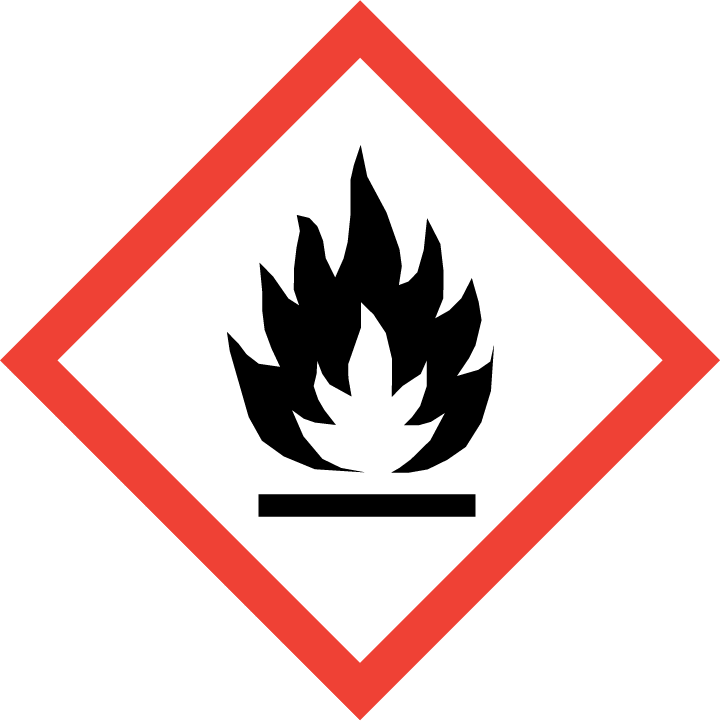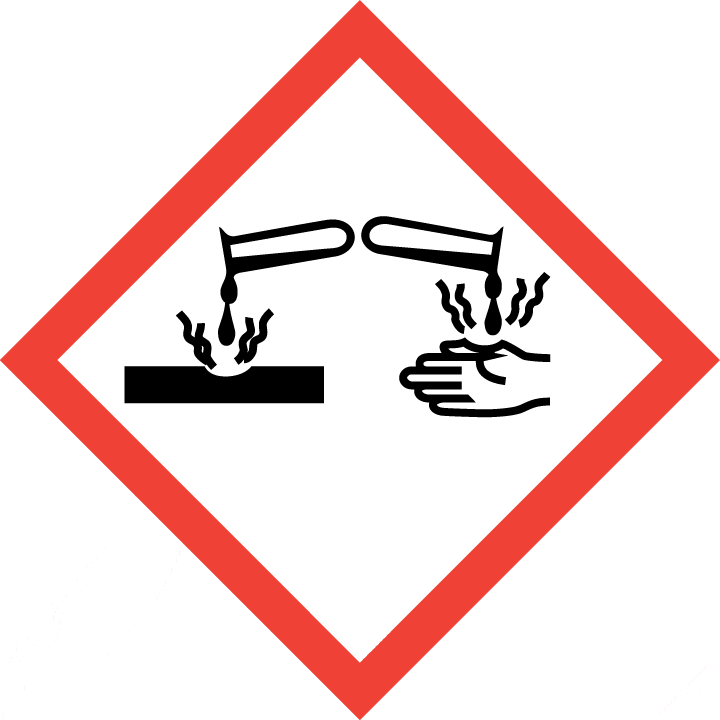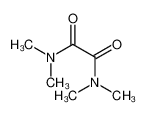| Product name | N,N-dimethylethanolamine |
|---|
| Product number | - |
|---|---|
| Other names | 2-hydroxy-N,N-dimethyl-benzamide |
| Identified uses | For industry use only. Corrosion inhibitors and anti-scaling agents,Intermediates,Paint additives and coating additives not described by other categories,Process regulators,Processing aids, not otherwise listed,Solids separation agents |
|---|---|
| Uses advised against | no data available |
| Company | MOLBASE (Shanghai) Biotechnology Co., Ltd. |
|---|---|
| Address | Floor 4 & 5, Building 12, No. 1001 North Qinzhou Road, Xuhui District, Shanghai, China |
| Telephone | +86(21)64956998 |
| Fax | +86(21)54365166 |
| Emergency phone number | +86-400-6021-666 |
|---|---|
| Service hours | Monday to Friday, 9am-5pm (Standard time zone: UTC/GMT +8 hours). |
Flammable liquids, Category 3
Acute toxicity - Oral, Category 4
Acute toxicity - Dermal, Category 4
Skin corrosion, Category 1B
Acute toxicity - Inhalation, Category 4
2.2 GHS label elements, including precautionary statements| Pictogram(s) |    |
|---|---|
| Signal word | Danger |
| Hazard statement(s) | H226 Flammable liquid and vapour H302 Harmful if swallowed H312 Harmful in contact with skin H314 Causes severe skin burns and eye damage H332 Harmful if inhaled |
| Precautionary statement(s) | |
| Prevention | P210 Keep away from heat, hot surfaces, sparks, open flames and other ignition sources. No smoking. P233 Keep container tightly closed. P240 Ground and bond container and receiving equipment. P241 Use explosion-proof [electrical/ventilating/lighting/...] equipment. P242 Use non-sparking tools. P243 Take action to prevent static discharges. P280 Wear protective gloves/protective clothing/eye protection/face protection. P264 Wash ... thoroughly after handling. P270 Do not eat, drink or smoke when using this product. P260 Do not breathe dust/fume/gas/mist/vapours/spray. P261 Avoid breathing dust/fume/gas/mist/vapours/spray. P271 Use only outdoors or in a well-ventilated area. |
| Response | P303+P361+P353 IF ON SKIN (or hair): Take off immediately all contaminated clothing. Rinse skin with water [or shower]. P370+P378 In case of fire: Use ... to extinguish. P301+P312 IF SWALLOWED: Call a POISON CENTER/doctor/…if you feel unwell. P330 Rinse mouth. P302+P352 IF ON SKIN: Wash with plenty of water/... P312 Call a POISON CENTER/doctor/…if you feel unwell. P321 Specific treatment (see ... on this label). P362+P364 Take off contaminated clothing and wash it before reuse. P301+P330+P331 IF SWALLOWED: Rinse mouth. Do NOT induce vomiting. P363 Wash contaminated clothing before reuse. P304+P340 IF INHALED: Remove person to fresh air and keep comfortable for breathing. P310 Immediately call a POISON CENTER/doctor/… P305+P351+P338 IF IN EYES: Rinse cautiously with water for several minutes. Remove contact lenses, if present and easy to do. Continue rinsing. |
| Storage | P403+P235 Store in a well-ventilated place. Keep cool. P405 Store locked up. |
| Disposal | P501 Dispose of contents/container to ... |
none
3.Composition/information on ingredients 3.1 Substances| Chemical name | Common names and synonyms | CAS number | EC number | Concentration |
|---|---|---|---|---|
| N,N-dimethylethanolamine | N,N-dimethylethanolamine | 108-01-0 | none | 100% |
Consult a physician. Show this safety data sheet to the doctor in attendance.
If inhaledFresh air, rest. Half-upright position. Refer for medical attention.
In case of skin contactFirst rinse with plenty of water for at least 15 minutes, then remove contaminated clothes and rinse again. Refer for medical attention .
In case of eye contactFirst rinse with plenty of water for several minutes (remove contact lenses if easily possible), then refer for medical attention.
If swallowedRinse mouth. Do NOT induce vomiting. Give one or two glasses of water to drink. Rest. Refer for medical attention .
4.2 Most important symptoms/effects, acute and delayedInhalation of the vapor or mist can cause irritation to the upper respiratory tract. Asthmatic symptoms have been reported. Extremely irritating; may cause permanent eye injury. Corrosive; will cause severe skin damage with burns and blistering. Ingestion may cause damage to the mucous membranes and gastrointestinal tract. (USCG, 1999)
4.3 Indication of immediate medical attention and special treatment needed, if necessaryImmediate first aid: Ensure that adequate decontamination has been carried out. If patient is not breathing, start artificial respiration, preferably with a demand valve resuscitator, bag-valve-mask device, or pocket mask, as trained. Perform CPR if necessary. Immediately flush contaminated eyes with gently flowing water. Do not induce vomiting. If vomiting occurs, lean patient forward or place on the left side (head-down position, if possible) to maintain an open airway and prevent aspiration. Keep patient quiet and maintain normal body temperature. Obtain medical attention. /Organic bases/Amines and related compounds/
5.Fire-fighting measures 5.1 Extinguishing media Suitable extinguishing mediaWater may be ineffective. Alcohol foam.
5.2 Specific hazards arising from the chemicalSpecial Hazards of Combustion Products: May contain toxic gases including ammonia (incomplete combustion) and NOx. Behavior in Fire: Produces gaseous nitrogen compounds that are highly toxic and irritating. (USCG, 1999)
5.3 Special protective actions for fire-fightersWear self-contained breathing apparatus for firefighting if necessary.
6.Accidental release measures 6.1 Personal precautions, protective equipment and emergency proceduresUse personal protective equipment. Avoid dust formation. Avoid breathing vapours, mist or gas. Ensure adequate ventilation. Evacuate personnel to safe areas. Avoid breathing dust. For personal protection see section 8.
6.2 Environmental precautionsPersonal protection: gas-tight chemical protection suit including self-contained breathing apparatus. Collect leaking and spilled liquid in sealable non-metallic containers as far as possible. Absorb remaining liquid in sand or inert absorbent. Then store and dispose of according to local regulations.
6.3 Methods and materials for containment and cleaning upContain spillage, and then collect with an electrically protected vacuum cleaner or by wet-brushing and place in container for disposal according to local regulations.
7.Handling and storage 7.1 Precautions for safe handlingAvoid contact with skin and eyes. Avoid formation of dust and aerosols. Avoid exposure - obtain special instructions before use.Provide appropriate exhaust ventilation at places where dust is formed. For precautions see section 2.2.
7.2 Conditions for safe storage, including any incompatibilitiesFireproof. Separated from strong oxidants, acids, acid chlorides, copper and food and feedstuffs.Do not store near acids.
8.Exposure controls/personal protection 8.1 Control parameters Occupational Exposure limit valuesno data available
Biological limit valuesno data available
8.2 Appropriate engineering controlsHandle in accordance with good industrial hygiene and safety practice. Wash hands before breaks and at the end of workday.
8.3 Individual protection measures, such as personal protective equipment (PPE) Eye/face protectionSafety glasses with side-shields conforming to EN166. Use equipment for eye protection tested and approved under appropriate government standards such as NIOSH (US) or EN 166(EU).
Skin protectionWear impervious clothing. The type of protective equipment must be selected according to the concentration and amount of the dangerous substance at the specific workplace. Handle with gloves. Gloves must be inspected prior to use. Use proper glove removal technique(without touching glove's outer surface) to avoid skin contact with this product. Dispose of contaminated gloves after use in accordance with applicable laws and good laboratory practices. Wash and dry hands. The selected protective gloves have to satisfy the specifications of EU Directive 89/686/EEC and the standard EN 374 derived from it.
Respiratory protectionWear dust mask when handling large quantities.
Thermal hazardsno data available
9.Physical and chemical properties| Physical state | clear to pale yellow liquid |
|---|---|
| Colour | Colorless liquid |
| Odour | Amine odor |
| Melting point/ freezing point | -70ºC |
| Boiling point or initial boiling point and boiling range | 139ºC |
| Flammability | Flammable. Gives off irritating or toxic fumes (or gases) in a fire. |
| Lower and upper explosion limit / flammability limit | Lower 1.6% Upper 11.9% |
| Flash point | 40ºC |
| Auto-ignition temperature | 295°C (USCG, 1999) |
| Decomposition temperature | no data available |
| pH | no data available |
| Kinematic viscosity | 3.5839 mPa.s at 21.6°C |
| Solubility | In water:miscible |
| Partition coefficient n-octanol/water (log value) | log Kow = -0.55 at 23°C |
| Vapour pressure | 100 mm Hg ( 55 °C) |
| Density and/or relative density | 0.888 |
| Relative vapour density | 3.03 (Relative to Air) |
| Particle characteristics | no data available |
no data available
10.2 Chemical stabilityStable under recommended storage conditions.
10.3 Possibility of hazardous reactionsFlammable liquid when exposed to heat or flame; can react vigorously with oxidizing materials. Ignites spontaneously in contact with cellulose nitrate of high surface area.The vapour is heavier than air.DIMETHYLAMINOETHANOL is an organic compound with both amine and alcohol substituents. Amines are chemical bases. They neutralize acids to form salts plus water. These acid-base reactions are exothermic. The amount of heat that is evolved per mole of amine in a neutralization is largely independent of the strength of the amine as a base. Amines may be incompatible with isocyanates, halogenated organics, peroxides, phenols (acidic), epoxides, anhydrides, and acid halides. Flammable gaseous hydrogen is generated by amines in combination with strong reducing agents, such as hydrides. This compound may react vigorously with oxidizing materials.
10.4 Conditions to avoidno data available
10.5 Incompatible materialsOxidizing agents, Copper, Zinc, Iron, Do not store near acids.
10.6 Hazardous decomposition productsWhen heated to decomposition it emits toxic fumes of NOx.
11.Toxicological information Acute toxicity- Oral: LD50 rat oral 2000 mg/kg
- Inhalation: LC50 Rats inhalation 1641 (862-3125) ppm/4 hr
- Dermal: no data available
no data available
Serious eye damage/irritationno data available
Respiratory or skin sensitizationno data available
Germ cell mutagenicityno data available
Carcinogenicityno data available
Reproductive toxicityno data available
STOT-single exposureno data available
STOT-repeated exposureno data available
Aspiration hazardno data available
12.Ecological information 12.1 Toxicity- Toxicity to fish: no data available
- Toxicity to daphnia and other aquatic invertebrates: no data available
- Toxicity to algae: no data available
- Toxicity to microorganisms: no data available
AEROBIC: 2-Dimethylaminoethanol, present at 100 mg/L, reached 60.5% of its theoretical BOD in 2 weeks using an activated sludge inoculum at 30 mg/L in the Japanese MITI test which classified the compound as readily biodegradable(1). A static test using a non adapted activated sludge inoculum measured a 2-dimethylaminoethanol degradation of >90% in 13 days(2).
12.3 Bioaccumulative potentialAn estimated BCF of 3 was calculated in fish for 2-dimethylaminoethanol(SRC), using a log Kow of -0.55(1) and a regression-derived equation(2). According to a classification scheme(3), this BCF suggests the potential for bioconcentration in aquatic organisms is low(SRC).
12.4 Mobility in soilUsing a structure estimation method based on molecular connectivity indices(1), the Koc of 2-dimethylaminoethanol can be estimated to be 1(SRC). According to a classification scheme(2), this estimated Koc value suggests that 2-dimethylaminoethanol is expected to have very high mobility in soil. The pKa of 2-dimethylaminoethanol is 9.3(3). At pH 8.2, 20% will be the free amine. Thus, this compound will exist almost entirely in the cation form in the environment and cations generally adsorb to organic carbon and clay more strongly than their neutral counterparts(4). As a result, 2-dimethylaminoethanol may have greater adsorption and less mobility than its estimated Koc value indicates.
12.5 Other adverse effectsno data available
13.Disposal considerations 13.1 Disposal methods ProductThe material can be disposed of by removal to a licensed chemical destruction plant or by controlled incineration with flue gas scrubbing. Do not contaminate water, foodstuffs, feed or seed by storage or disposal. Do not discharge to sewer systems.
Contaminated packagingContainers can be triply rinsed (or equivalent) and offered for recycling or reconditioning. Alternatively, the packaging can be punctured to make it unusable for other purposes and then be disposed of in a sanitary landfill. Controlled incineration with flue gas scrubbing is possible for combustible packaging materials.
14.Transport information 14.1 UN Number| ADR/RID: UN2051 | IMDG: UN2051 | IATA: UN2051 |
| ADR/RID: 2-DIMETHYLAMINOETHANOL |
| IMDG: 2-DIMETHYLAMINOETHANOL |
| IATA: 2-DIMETHYLAMINOETHANOL |
| ADR/RID: 8 | IMDG: 8 | IATA: 8 |
| ADR/RID: II | IMDG: II | IATA: II |
| ADR/RID: no | IMDG: no | IATA: no |
no data available
14.7 Transport in bulk according to Annex II of MARPOL 73/78 and the IBC Codeno data available
15.Regulatory information 15.1 Safety, health and environmental regulations specific for the product in question| Chemical name | Common names and synonyms | CAS number | EC number |
|---|---|---|---|
| N,N-dimethylethanolamine | N,N-dimethylethanolamine | 108-01-0 | none |
| European Inventory of Existing Commercial Chemical Substances (EINECS) | Listed. | ||
| EC Inventory | Listed. | ||
| United States Toxic Substances Control Act (TSCA) Inventory | Listed. | ||
| China Catalog of Hazardous chemicals 2015 | Listed. | ||
| New Zealand Inventory of Chemicals (NZIoC) | Listed. | ||
| Philippines Inventory of Chemicals and Chemical Substances (PICCS) | Listed. | ||
| Vietnam National Chemical Inventory | Listed. | ||
| Chinese Chemical Inventory of Existing Chemical Substances (China IECSC) | Listed. | ||
| Creation Date | Aug 20, 2017 |
|---|---|
| Revision Date | Aug 20, 2017 |
- CAS: Chemical Abstracts Service
- ADR: European Agreement concerning the International Carriage of Dangerous Goods by Road
- RID: Regulation concerning the International Carriage of Dangerous Goods by Rail
- IMDG: International Maritime Dangerous Goods
- IATA: International Air Transportation Association
- TWA: Time Weighted Average
- STEL: Short term exposure limit
- LC50: Lethal Concentration 50%
- LD50: Lethal Dose 50%
- EC50: Effective Concentration 50%
- IPCS - The International Chemical Safety Cards (ICSC), website: http://www.ilo.org/dyn/icsc/showcard.home
- HSDB - Hazardous Substances Data Bank, website: https://toxnet.nlm.nih.gov/newtoxnet/hsdb.htm
- IARC - International Agency for Research on Cancer, website: http://www.iarc.fr/
- eChemPortal - The Global Portal to Information on Chemical Substances by OECD, website: http://www.echemportal.org/echemportal/index?pageID=0&request_locale=en
- CAMEO Chemicals, website: http://cameochemicals.noaa.gov/search/simple
- ChemIDplus, website: http://chem.sis.nlm.nih.gov/chemidplus/chemidlite.jsp
- ERG - Emergency Response Guidebook by U.S. Department of Transportation, website: http://www.phmsa.dot.gov/hazmat/library/erg
- Germany GESTIS-database on hazard substance, website: http://www.dguv.de/ifa/gestis/gestis-stoffdatenbank/index-2.jsp
- ECHA - European Chemicals Agency, website: https://echa.europa.eu/




































